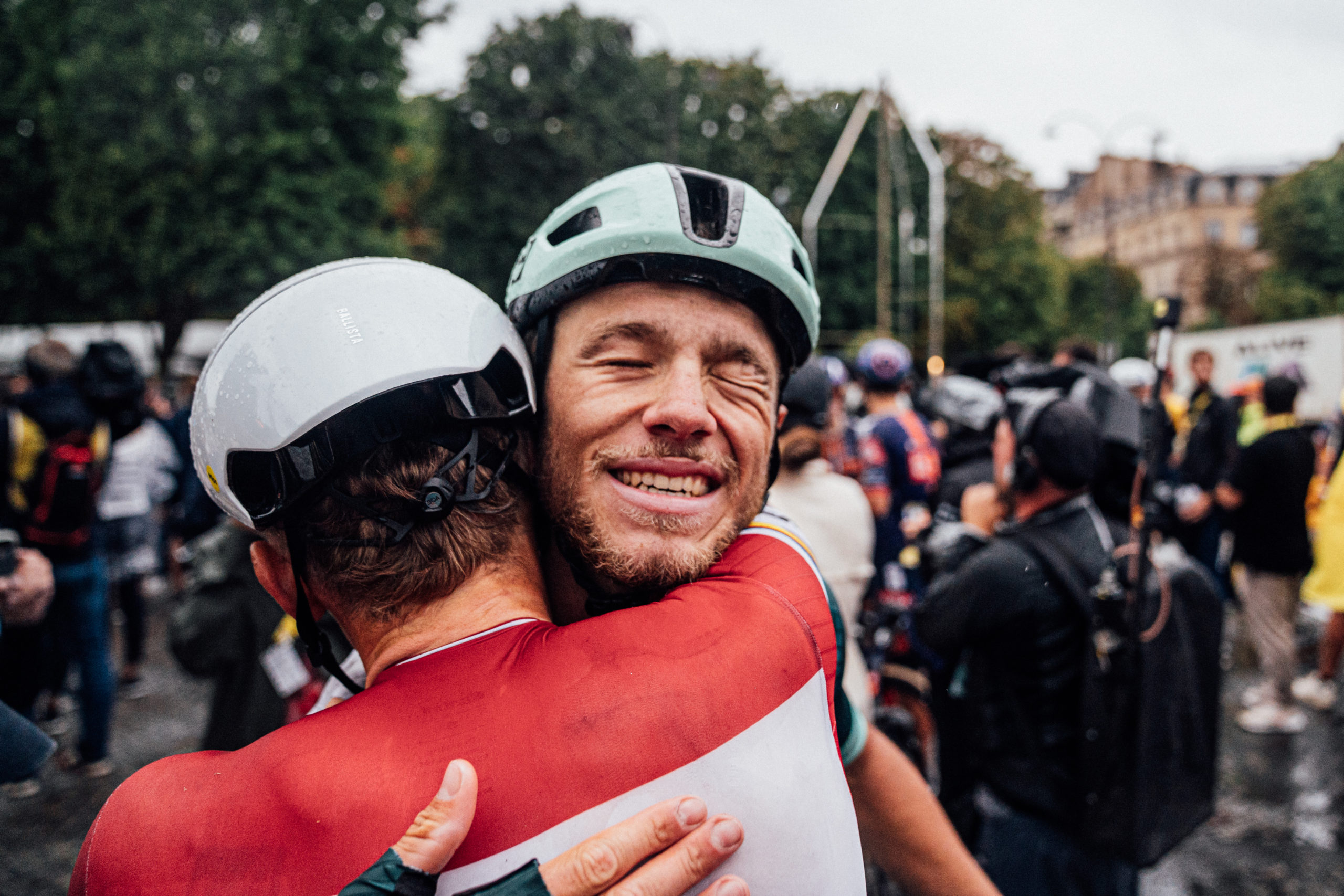Jonathan Milan’s overall points classification victory in Paris was anything but by the book
Before the Tour de France, Jonathan Milan had well-established himself as one of the preeminent sprinters in the world. He had also never competed in a race as prestigious and pressure-packed as the Tour de France before being handed a treasure chest of resources to help him potentially win the green jersey.
On one hand he was Grand Tour-tested, having twice won the points competition at the Giro d’Italia. On the other, he was a 24-year-old rider entering the biggest bike race on Earth, a contest so fabled it transcends cycling and writes riders into legend. And unlike Mads Pedersen’s clinical campaign to win the points classification at this year’s Giro, his points jersey required improvisation and harried efforts to stay ahead of the competition (in particular, fending off a certain Slovenian rider in fireball form.)
Jonathan Milan showing off after his Stage 8 victory. | Photo: Sean Hardy
Steven de Jongh joined Trek’s road racing program in 2017 as a sports director (DS). He has managed the Lidl-Trek squad at some of cycling’s biggest races, including the Tour de France, as well as at Paris-Roubaix and the spring classics.
Being a DS means being a shrewd road tactician and a psychologist, able to both convey a race plan and keep riders motivated when that plan inevitably goes poof. De Jongh was in France for every step of Milan’s march to Paris, helping to guide the young rider through a chaotic green jersey campaign and secure one of the biggest prizes in cycling.
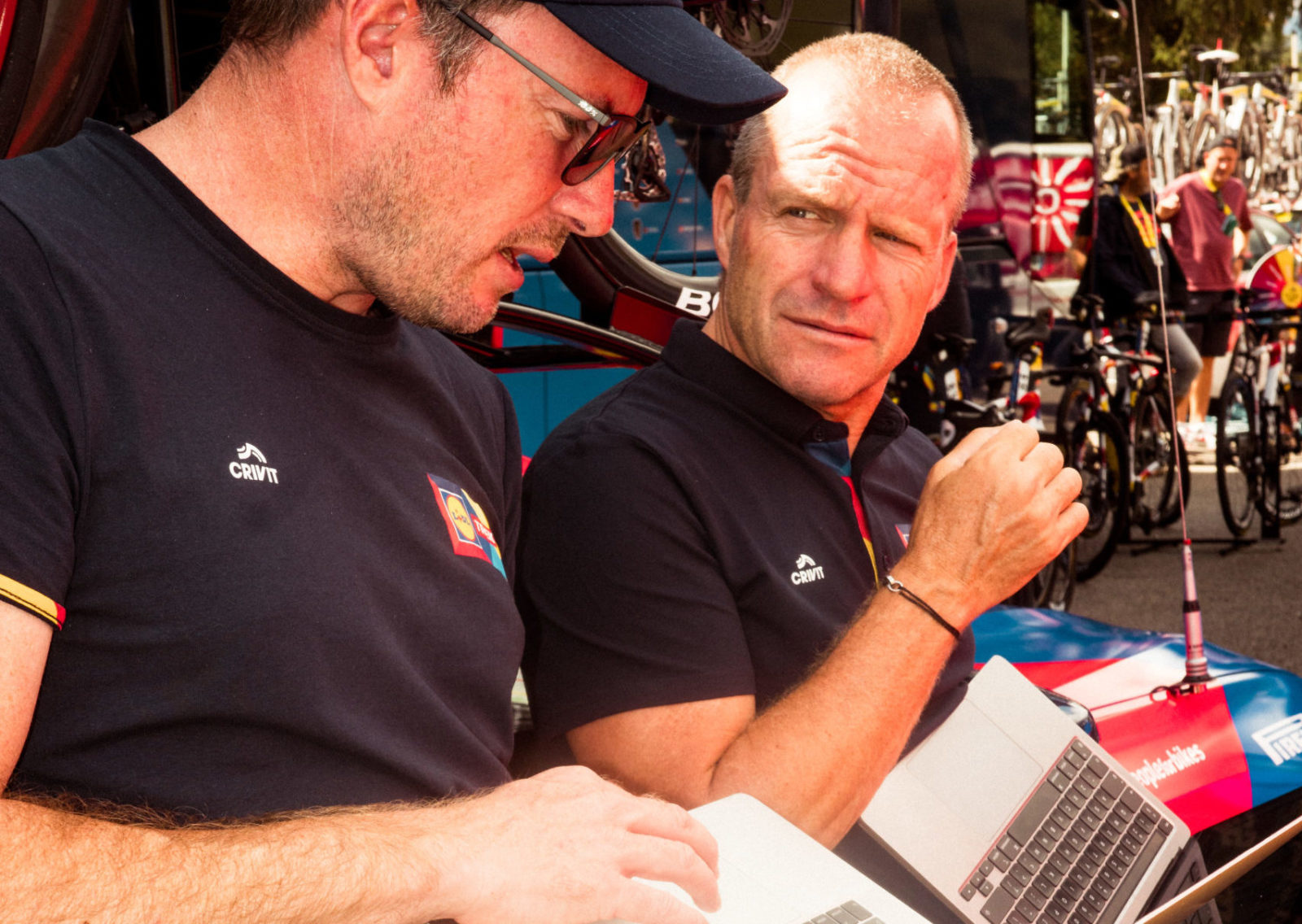
Steven de Jongh (right) game planning in the mountains with fellow sports director Grégory Rast. | Photo: Sean Hardy
Lidl-Trek’s plan from the very first kilometer was to win every intermediate sprint and stage that it could.
“The spirit was always there to fight and to fight for green, even in the mountain stages,” De Jongh said. “There were some hard days, but always with a plan for trying to collect points.”
Lidl-Trek made no mistake that it wanted to win the yellow jersey with Milan on Stage 1, but crosswinds and poor positioning around a roundabout put the squad behind a split in the peloton and out of contention. The team wouldn’t make a mistake like that again over the next three weeks, but the damage was done: Milan was immediately scrambling for points against fierce competition.
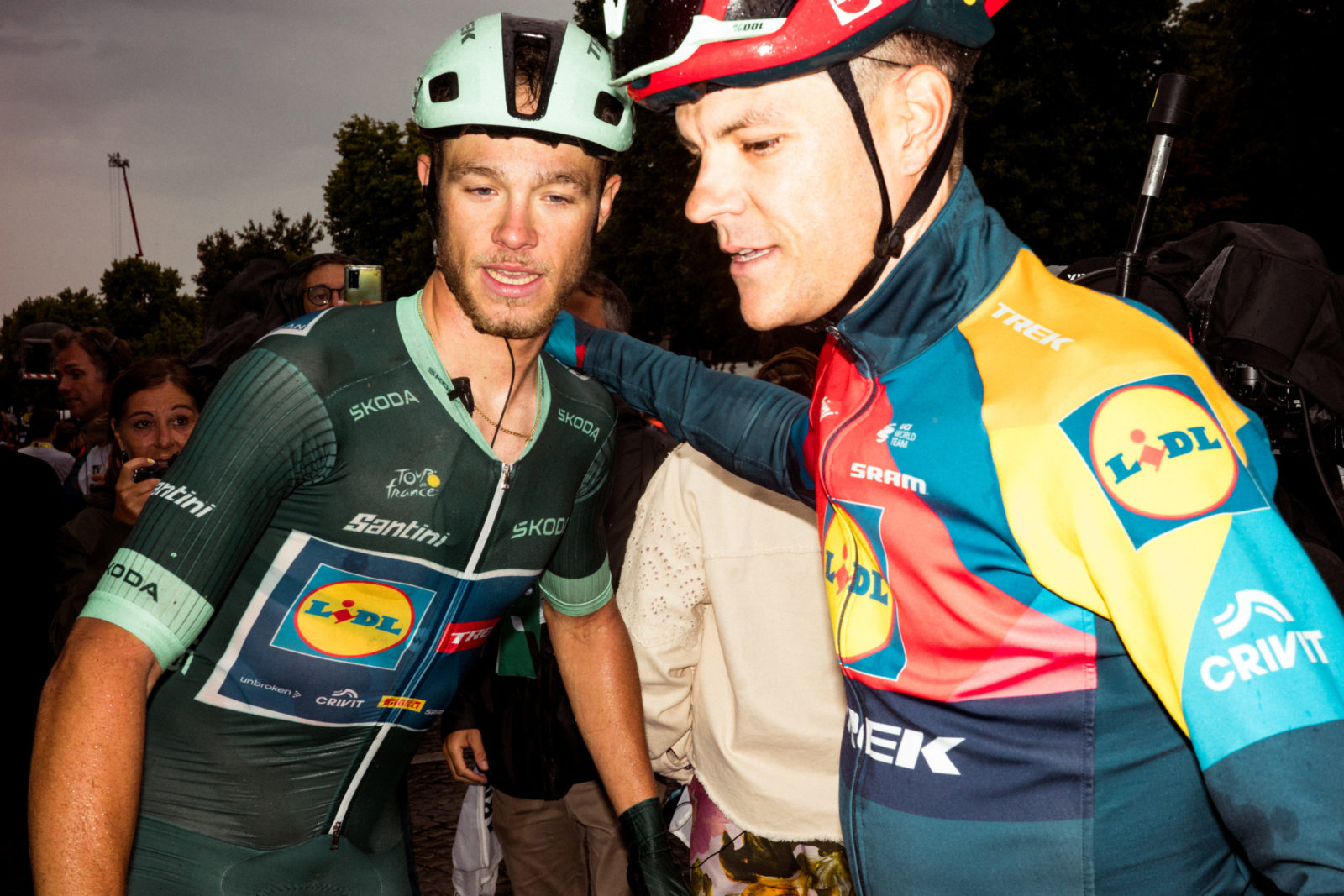
Jonny and Jasper Stuyven spent after Stage 21 in Paris. | Photo: Sean Hardy
A second-place finish on Stage 3 was a nice bounceback, but it also highlighted how difficult winning would be even when the day unfolded according to script.
“Jonny was not happy, of course,” De Jongh laughs. “When you miss out the first day and then on the next opportunity you get second, you’re not happy. But then, as a rider, you always think of the next opportunity. And then it was Stages 8 and 9.”
Lidl-Trek couldn’t afford to miss many more opportunities. This year’s Tour featured few nailed-on sprint stages compared to past editions. The team would have to make the few remaining sprint opportunities count.
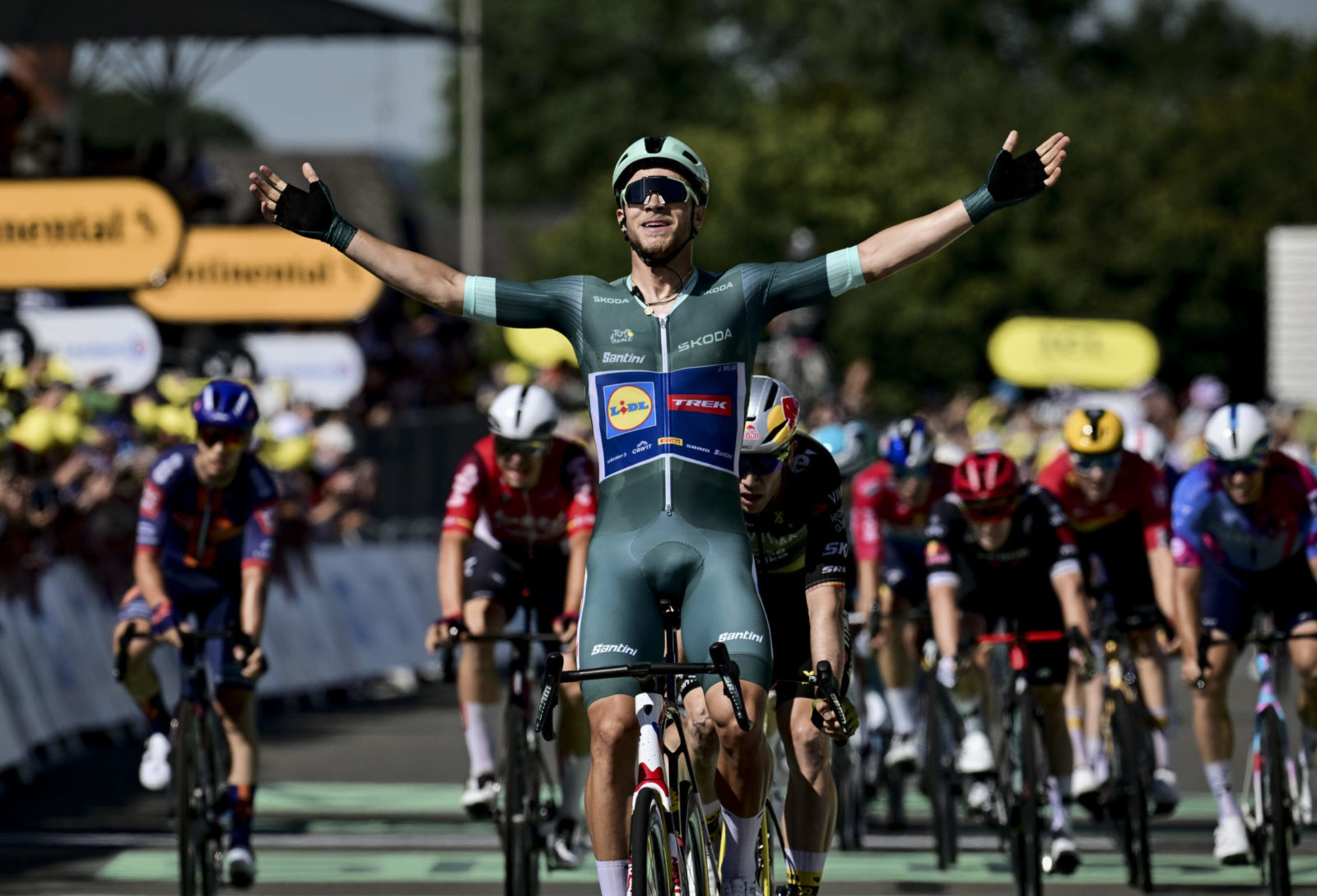
Jonny winning Stage 8. | Photo: Zac Williams
Milan would finally earn his first career Tour win on Stage 8, dominating a rare by-the-numbers bunch sprint. Milan would stay in green from that point all the way through the finish line in Paris, but that fact belies the battle that ensued.
Lidl-Trek had no time to savor the win because it was put to the knife immediately on Stage 9. A high-powered breakaway containing Mathieu van der Poel, one of the fastest one-day racers of all time, got away from Kilometer 0. Defending the green jersey on a frying pan-flat profile, Lidl-Trek was forced to assume almost all of the effort chasing down the Dutchman.
And though the team succeeded in reeling in Van der Poel with under one kilometer left in the stage, Milan’s leadout train was exhausted from the effort. Milan maneuvered himself well without his teammates, but settled for second behind a speedy Tim Merlier. A bittersweet end to one of the most impressive team efforts of the year.
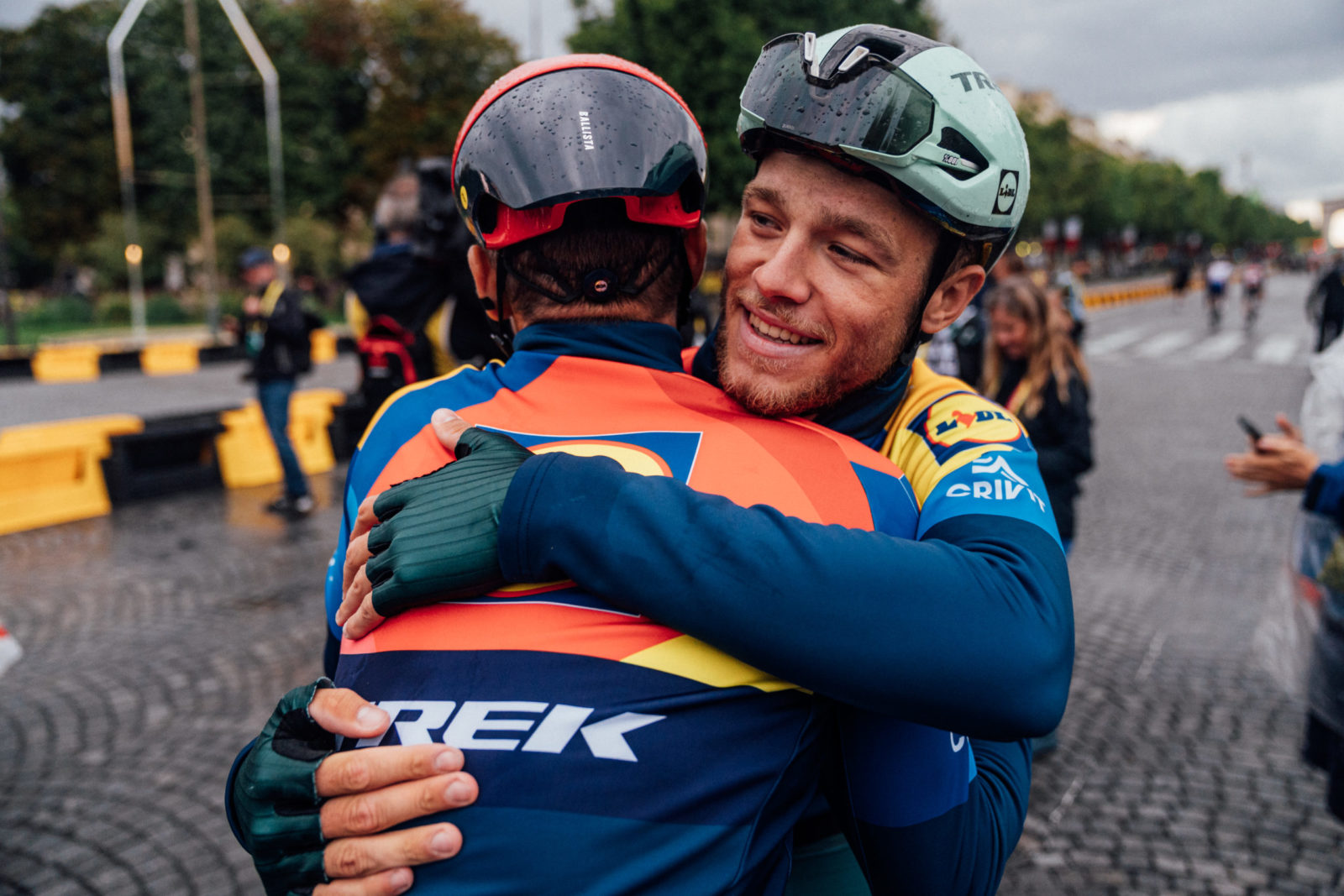
More hugs on the Champs-Élysées. | Photo: Zac Williams
“Despite the second-place there, I think as a team, we didn’t leave a chance unturned,” De Jongh said. “If those two riders or just Mathieu would have stayed in front, and then you finish second in the sprint, then it would have been a worse feeling, because then you burned your whole team the whole day. That would have really sucked.
“There was disappointment in getting second, but also pride that at least they could sprint for victory.”
The result extended Milan’s lead in the points classification, but then new worries set in. The No. 2 rider was Tadej Pogačar, the yellow jersey bearer and winner of two stages to that point. He tacked on a Stage 12 win in the mountains and a Stage 13 win in the individual time trial to pull within 28 points of Milan on the standings. He displayed a level of dominance that, at that time, seemed inevitable.
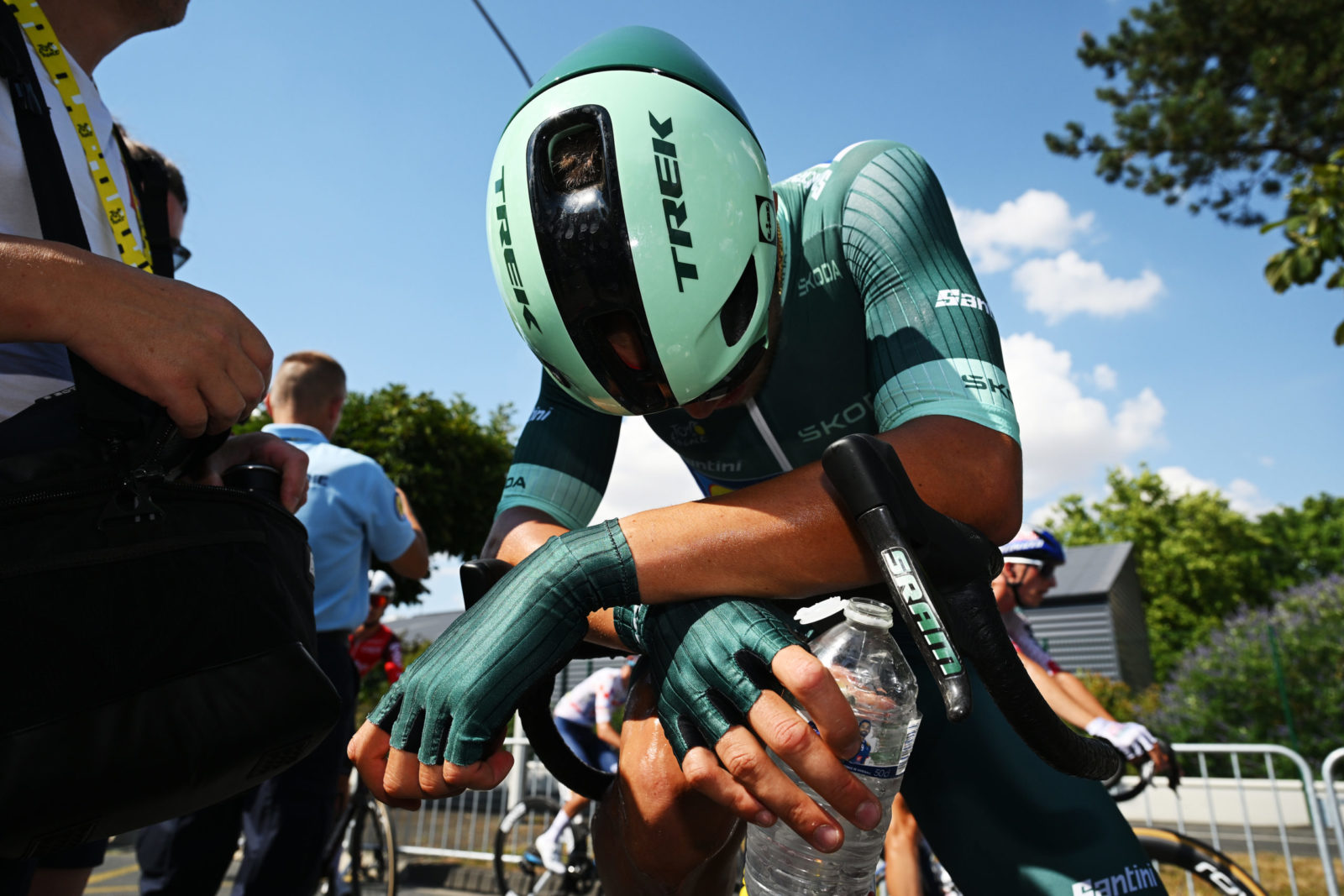
An exhausted Jonny after Stage 9. | Photo: Dario Belingheri/Getty Images
Milan had to wait eight days for his next — and last — traditional sprint finish opportunity on Stage 17. That span of just over a week feels like an eon in Tour terms, especially when one of the greatest cyclists of all time is whittling away your lead. And it’s not as if Milan could rest until his next chance at a sprint; he still had to stay safe from the time cut as the Tour wound its way through the Pyrenees.
“I think some days it really made him nervous, because he could see there were still a lot of points to gain,” De Jongh said. “But once we showed him, ‘This is what’s left, this is what we can control, this is what we can take,’ he could also see that winning was possible.”

Jonny flying the green jersey and a special green Chroma Trek Madone in front of Sacre Coeur on Stage 21. | Photo by Dario Belingheri/Getty Images
Layers of pressure weighed on the young Italian rider at the start of Stage 17, but Lidl-Trek’s teamwork was beyond reproach. The team kept Milan at the front of the race, and just ahead of a heavy crash that took place under the 1k-to-go banner. Milan took the reins from there, sprinting to his second stage win of the Tour from a reduced bunch, and effectively (though not yet mathematically) cementing the points title.
“After stage 17, I think we were all quite confident that it would go. Also, because there were already some signs that Pogačar was a little bit more tired than we saw in the Pyrenees,” De Jongh said. “Having the intermediate sprints early on in these stages, we were quite comfortable that we could manage the situation.”
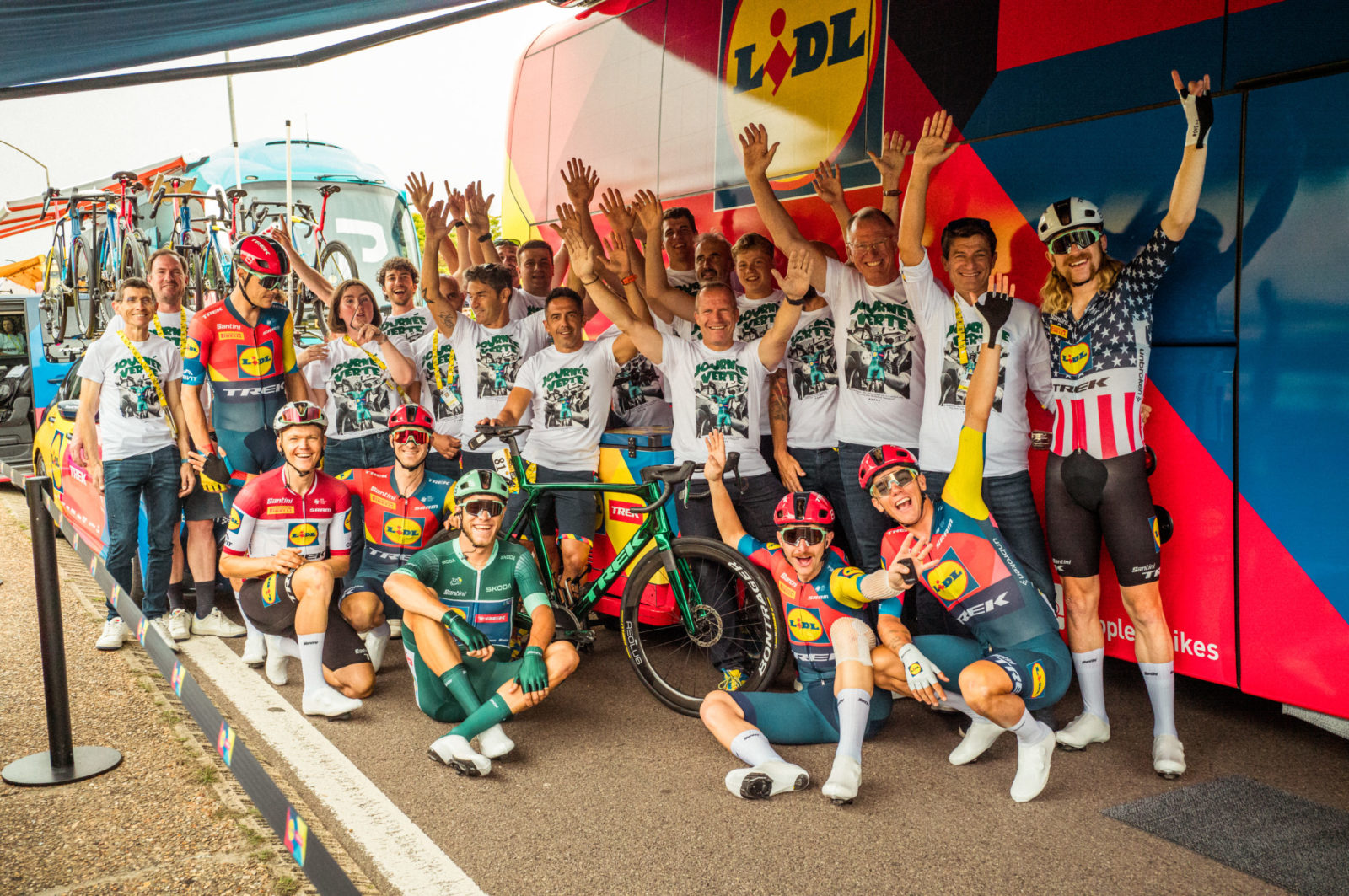
Lidl-Trek riders and staff celebrating Jonny’s overall green jersey victory. | Photo: Sean Hardy
Lidl-Trek riders and staff knew that with the Stage 17 win, Milan would likely don the overall green jersey in Paris, barring catastrophe. But no one dared speak that reality out loud, and they certainly weren’t willing to let off the gas. Milan won three of the remaining four available intermediate sprints, gaining 20 points in each — the equivalent of a stage win on a mountain stage — and expanded his lead.
On Stage 20, he allowed himself to race on a green Chroma Madone Gen 8 — a cathartic flex on a race that had been stressful and chaotic even beyond expectations.
Finally, the celebration was on.
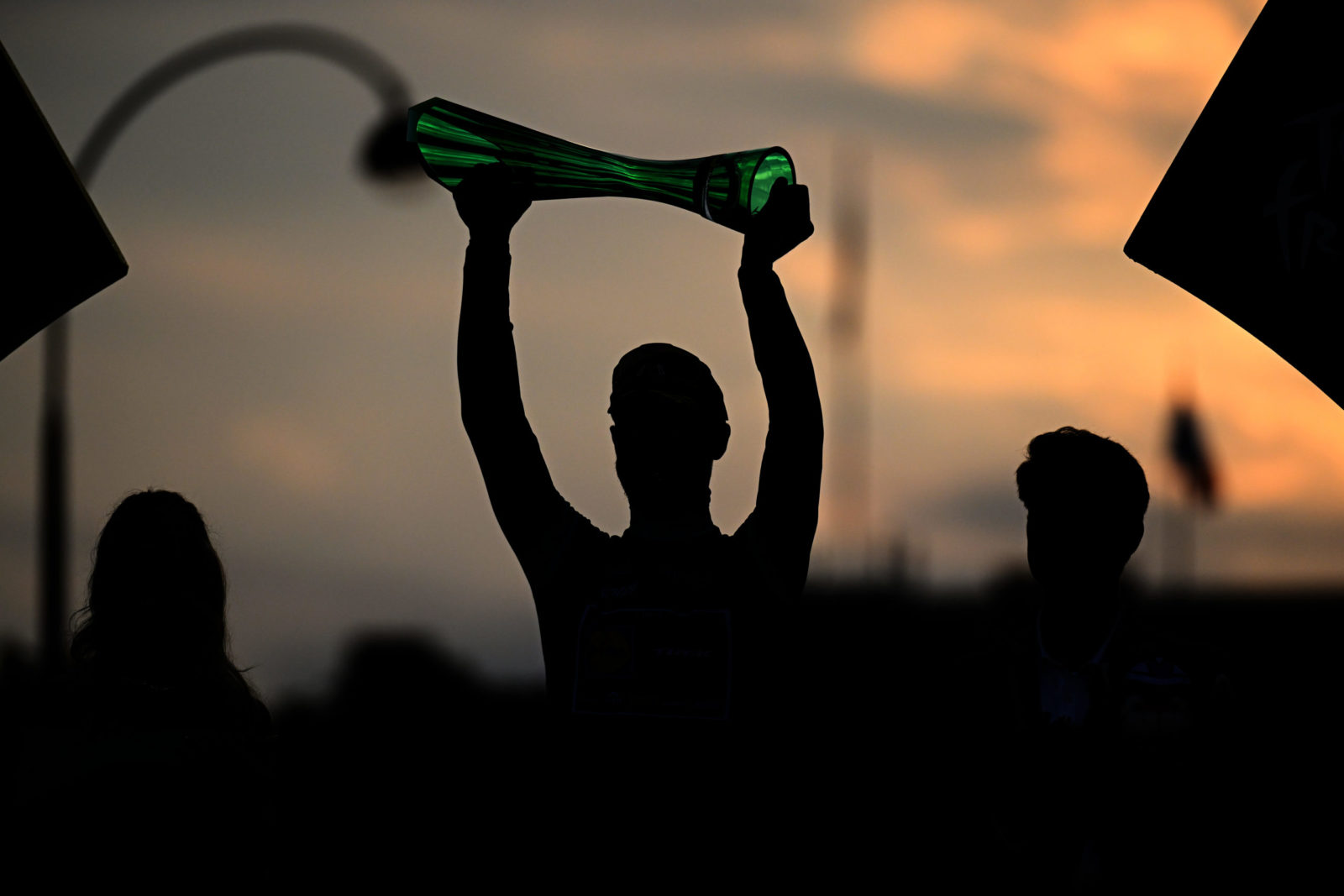
Bonne nuit. | Photo by Dario Belingheri/Getty Images
Milan’s green jersey victory wasn’t unexpected, but that didn’t make it easy. Based on his two Ciclamino-winning campaigns at the Giro, it was obvious he had the legs to win the points classification at La Grande Boucle. But the Tour tested him in a way he had never experienced.
“It’s not easy. It’s top, top level. And then winning the green jersey in the first year, it’s something not many sprinters have done, and it makes it even more special,” De Jongh said. “Every time he has done a Grand Tour, he has also won the points classification. I cannot remember any rider who has done this.”
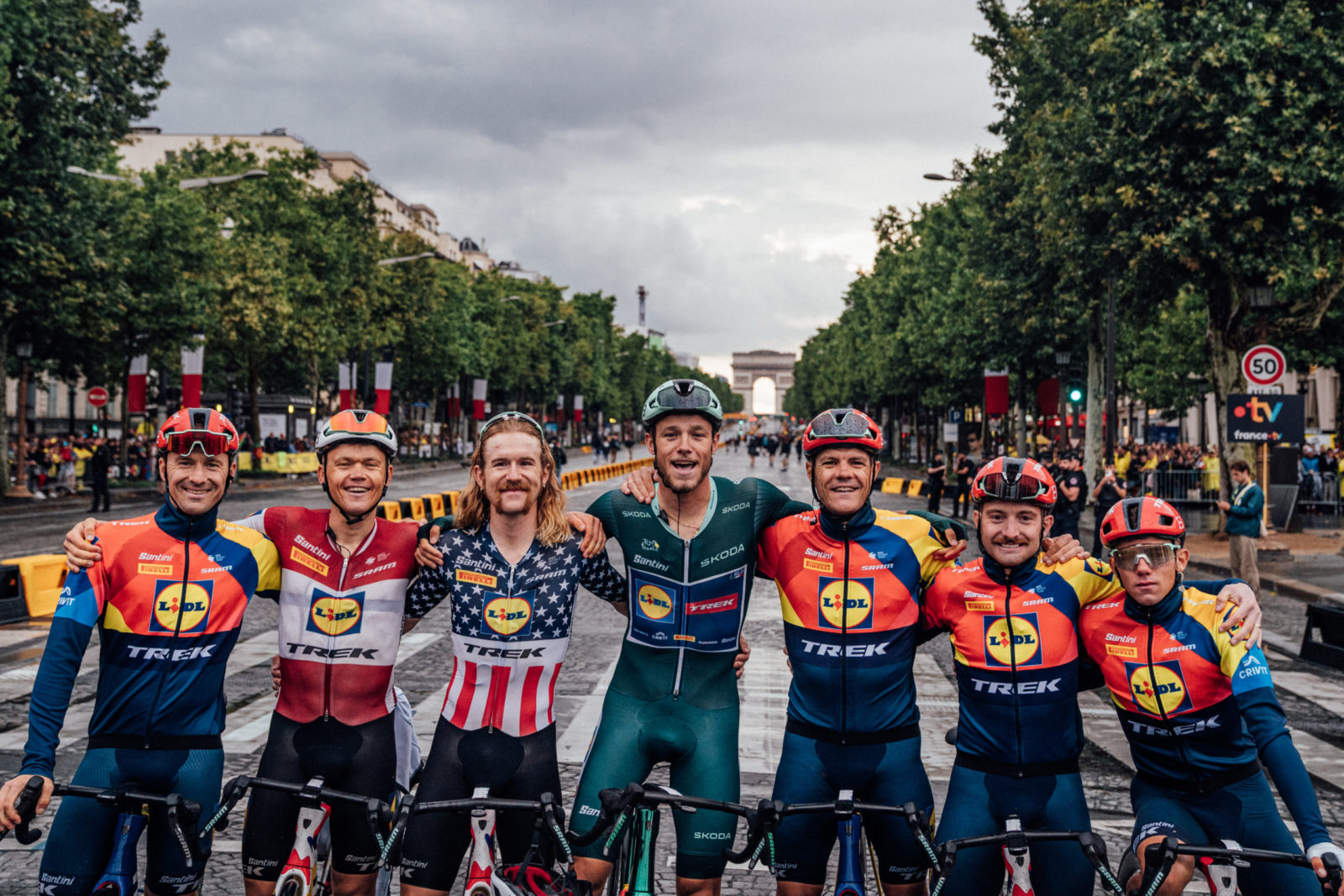
The Lidl-Trek Tour de France squad in Paris. | Photo: Zac Williams
The first Tour de France of a young rider’s career is a harsh experience. To not only survive the ordeal, but win one of the biggest prizes in the sport, reflects a level of talent and mettle that can solidify a starring role at the event for years to come.
“In the future, he will be more familiar with all the stress around the Tour, and that will make it easier for him,” De Jongh said. “He is young, and he will evolve and become a more stable leader in the future.”
Jonny’s reign is far from over.
